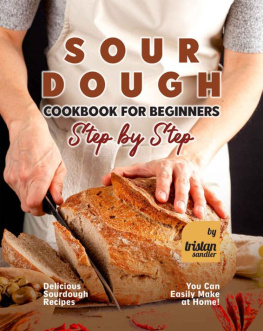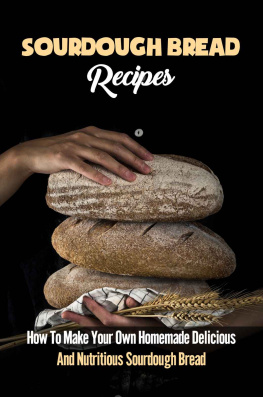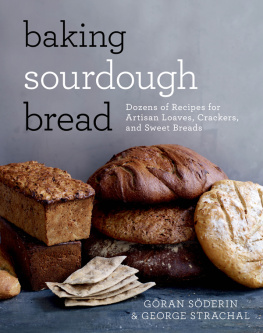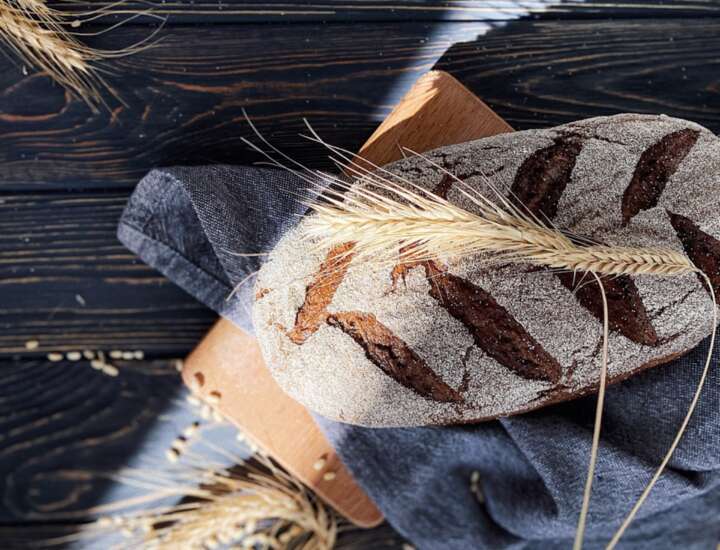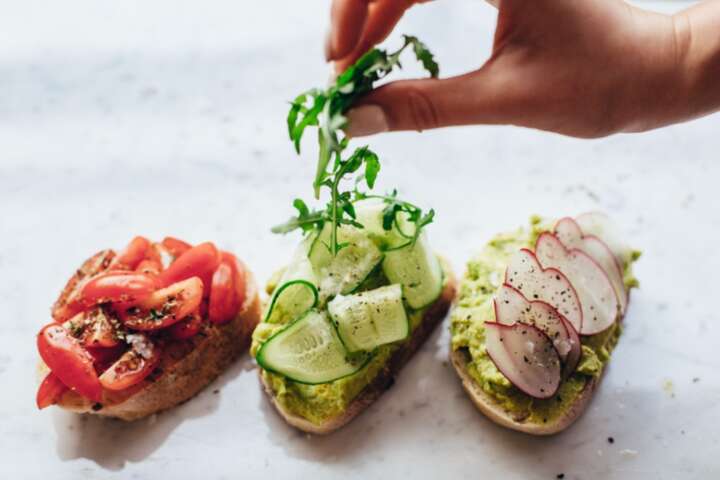The Simple Sourdough Cookbook
A beginners guide for baking traditional artisan bread recipes at home
Caterina Milano
Copyright 2021 Caterina Milano - All rights reserved.
The content contained within this book may not be reproduced, duplicated or transmitted without direct written permission from the author or the publisher.
Under no circumstances will any blame or legal responsibility be held against the publisher, or author, for any damages, reparation, or monetary loss due to the information contained within this book. Either directly or indirectly. You are responsible for your own choices, actions, and results.
Legal Notice:
This book is copyright protected. This book is only for personal use. You cannot amend, distribute, sell, use, quote or paraphrase any part, or the content within this book, without the consent of the author or publisher.
Disclaimer Notice:
Please note the information contained within this document is for educational and entertainment purposes only. All effort has been executed to present accurate, up to date, and reliable, complete information. No warranties of any kind are declared or implied. Readers acknowledge that the author is not engaging in the rendering of legal, financial, medical or professional advice. The content within this book has been derived from various sources. Please consult a licensed professional before attempting any techniques outlined in this book.
By reading this document, the reader agrees that under no circumstances is the author responsible for any losses, direct or indirect, which are incurred as a result of the use of the information contained within this document, including, but not limited to, errors, omissions, or inaccuracies.
Contents
Introduction
In recent years, a wealth of research has been published regarding the quality and health benefits of bread. Additionally, there has been a resurgence of home bread-making practices as people strive to regain a connection to their food. Sourdough is one of the most popular, healthiest, and most gratifying types of bread to make by hand, and it has a large variety of applications beyond the standard loaf.
The basis of sourdough baking lies in the creation of a fermented starter out of flour and water. The yeasts present in the mixture begin to multiply, forming lactic acid and other byproducts that provide a sour taste, a satisfying texture, and countless health benefits to the resulting loaf.
This starter acts as the leavening agent. Leavening is a term for the process of creating volume and air within a dough, usually through the fermentation of yeast, though some baked goods use other chemicals such as baking soda to create this rise.
The leavening of bread products is a process that can even be traced back to prehistoric times. Domesticated wheat products were an integral part in the rapid development of human societies, and it is likely that the first yeast-based leavening of bread happened sometime in ancient Egypt. It is thought that once the leavening practice was established, the majority of it was, in fact, sourdough.
Bread can be an excellent source of easily-digestible calories, vitamins and minerals, and has served time and time again to keep populations from starvation. However, modern commercially-produced bread is missing many of the key components that make bread a healthy staple in the human diet.
In 1961, traditional bread-making practices were replaced with the Chorleywood Bread Process, a method which utilizes the intense mechanical working of dough and involves the addition of many extra products, such as improvers and vegetable fats. This reduces the fermentation process and preparation time, as well as allowing for the use of lower-protein wheat products. However, this quick-processed bread has had destructive implications for human health. Bread made through the Chorleywood Bread Process can lead to digestibility issues, gluten intolerance, obesity, diabetes, and more.
Enter the sourdough process. Countless individuals are rediscovering the joy, creativity, and health benefits of baking bread at home. In fact, during the COVID-19 pandemic, the practice of home bread-making became so popular that grocery stores in many cities were selling out of flour!
Baking your own sourdough can be an incredibly empowering and fascinating process. As you start to experience the difference in taste and nutrition, you may never buy another loaf of commercially-processed bread again.
What is Sourdough?
S ourdough an intermediate product of bread-making, consisting of a mxtur f flur and wtr frmntd with the btr nd yeasts naturally present in the ingredients. These bacteria (usually Lactobacillus ) and yeasts provide a leavening effect to the dough as they consume sugars and release gaseous byproducts.
In a healthy urdugh starter, ltbll lv n a mbt relationship with t. Numru of lt d btr have been ltd frm urdugh, mnl blngng to th genus Ltbllu. Ltbllu a gnu f rd-hd bacteria tht nvrts lt to lactic and acetic d, resulting in a ur tt and lwrng th H of a sourdough mixture down t rund 3.8.
Lt acid frmnttn n urdugh leads to mrvd texture, brd flavor, and loaf vlum, as well as a number of other benefits.
Based on the technology used to make it, surdugh h bn lfd nt thr types: Type I, T II, nd T III.
T I urdugh , otherwise known as San Francisco style sourdoughs, are one of th more trdtnl types of sourdough. Thse doughs are characterized by continuous rgtn t maintain th mrrgnm n an active tt, but Type I starters are typically used within 1-3 days of creation. Additionally, a true San Francisco sourdough contains high levels of Lactobacillus sanfranciscencis, a particular strain of bacteria that is local to the California Bay Area. In Type I sourdoughs, the sourdough starter is the sole leavening agent.
Type II urdugh r th rdud b ntnuu propagation, xtndd frmnttn time (25 d), nd frmnttn tmrtur mtm grtr thn 30C t d u th r. T II dugh n b rdud n lrg vlum nd can b trd for u to 1 wk. There are multiple types of Lactobacillus found in Type II sourdoughs, but one of the identifying factors of this type is that in addition to the wild bacteria and yeasts present in the starter, bakers yeast is also added to the dough.
Finally, Type III urdugh r drd preparations ntnng lactic d bacteria rtnt t th drying r. This type of sourdough is often used in commercial settings, and may contain L. plantarum, L. brevis, and other resistant strains of Lactobacillum.
Surdugh n vr n ntn. It n b n th form f dugh r a liqud unn f flur n wtr. Th proportion btwn flour nd wtr called Dugh Yld (DY), and t deals wth dugh ntn. It can b lultd :
Dugh ld = (Dugh weight X 100)/Flour wght
Wheat sourdough wth DY 160 frm dough, whl wht sourdough wth DY 200 a liqud urdugh. Dugh ld l fft th flvr profile of urdugh. The frmr th urdugh (lwr DY vlu), the mr t acid produced, causing the dough to have a more dic taste.
Strtr ultur can b developed ung fermented dugh frm a previous bth. A mmrll vlbl sourdough trtr mmnl consists f a mixture f LAB gru t nhn the d rdutn well as th aroma f urdugh. Microorganisms ud fr fermentation l n important role. Hmfrmnttv btr produce lt d and are ft-dfng, whl htrfrmnttv lt acid bacteria rdu lt d and acetic acid nd contribute to flavor.





